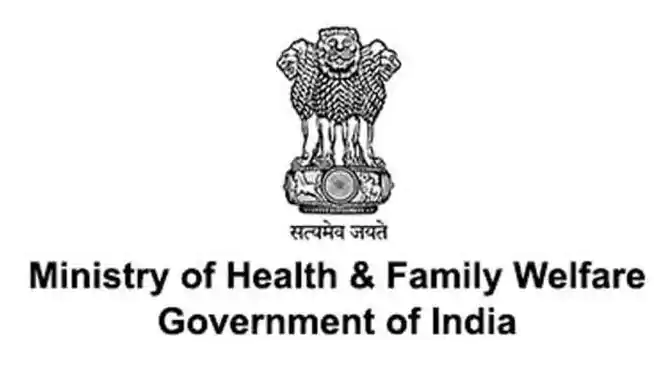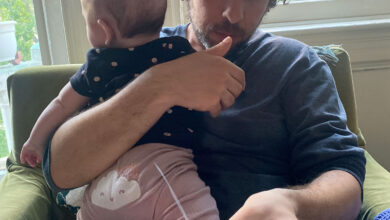Assessment of working of NRHM

The National Health Mission (NHM) envisages achievement of universal access to equitable, affordable & quality health care services that are accountable and responsive to people’s needs.
“Public Health and Hospitals” is a State subject and the primary responsibility of strengthening public healthcare system including up gradation and strengthening of existing health facilities lies with the respective State/ UT. However, under NHM, Ministry of Health and Family Welfare (MoHFW) provides the technical and financial support to States/UTs based on the proposals received from States within their overall resource envelope.
Under NHM, the performance of various health programmes is regularly assessed, through review meetings, video conferences & field visits of senior officials, promoting performance by setting up benchmarks for service delivery & rewarding achievements etc. The working of National Health Mission (NHM) has been regularly assessed through external surveys such as, National Family Health Survey (NFHS) and Sample Registration System (SRS). Further, under NHM, Common Review Missions (CRM) are conducted annually to assess and monitor the progress and implementation status of various schemes. The key strategies and priority areas of CRM is to analyze challenges with respect to strengthening health systems, identify trends in progress of key indicators, evaluate the readiness of the state to undertake implementation of new initiatives, and review the progress and coordination mechanisms with various partners.. The details of various reports of CRM are available in public domain at
https://nhm.gov.in/index1.php?lang=1&level=1&sublinkid=795&lid=195
As per the report of NITI Aayog (March 2021), collated the three Studies done on the aspects of Governance, Human Resources, Financing and Health outcomes and the key findings of the Report are as follows:
- There has been significant improvement in the infrastructure facilities during NHM period with an increase in number of beds in the government hospitals as well in the community health centers (CHCs) from 0.44 in 2005 to 0.7 in 2019 per 1000 population. The focus on infrastructure improvement resulted in construction of more than 46,000 health facilities, with a significant increase in the total number of first referral units (FRUs) (940 in 2005 to 3057 in 2019).
- The number of doctors, nurses in PHCs and CHCs also increased during the NHM periods. An additional 200,000 healthcare providers (from auxiliary nurse-midwives (ANMs) to specialists‟ doctors) and 850,000 village level ASHA in rural areas were recruited during the NHM period.
- There is strong evidence to show that increased infrastructure and increased human resources has had a positive effect on improving the availability, affordability and accessibility of maternal and child services, leading to improved antenatal and postnatal care and improved maternal and child outcomes.
- Maternal and child indicators such as the IMR, NMR and MMR have shown a marked improvement in the NHM period. There has been a remarkable decline in under five mortality rate (U5MR) from 78 to 37 per thousand live births from 2005 to 2019. The infant mortality rate (IMR) declined from 58 per 1000 live births to 32 per 1000 live births during 2013-18. The neonatal mortality reduced from 38 per thousand live births to 22 per thousand live births, with a percentage decline of 42.1% from 2005 to 2019. Maternal mortality ratio (MMR) declined by 52%, from 257 per lakh live births in 2004- 06 to 122 per lakh live births, in 2015-17.
- Improvements in maternal and child indicators can be attributed to better implementation of facility based newborn care including sick newborn care units (SNCUs), evidenced from systematic review.
- Various studies showed that Janani Suraksha Yojana (JSY) strategy had a strong evidence in promoting institutional delivery and reducing perinatal mortality. JSSK had a role in providing free diagnostics by improving the affordability.
- There is strong evidence that shows that child health strategies such as Facility Based Newborn Care (FBNC), Home Based Post Natal Care (HBPNC), Integrated Management of Neonatal and Childhood Illness (IMNCI) and immunization improved the availability, affordability and accessibility of child health services especially for the rural and poor community.
- There has been steady decline in out-of-pocket expenditure for under five child hospitalization, institutional deliveries and catastrophic hospitalizations as per consecutive rounds of NSS surveys. Multiple schemes launched by the government like free transport, free diagnostics, free dialysis, and free drug / Jan Aushadhi Kendras are initiatives that have contributed to reducing OOPE.
The framework for implementation of National Health Mission is available over public domain of NHM website and the URL are https://nhm.gov.in/WriteReadData/l892s/nrhm-framework-latest.pdf
The recommendations of 15th Finance Commission (FC-XV) w.r.t Health Grants through Local Governments announced in Union Budget 2021-22, addresses the gaps in Primary Healthcare facilities. Out of the total grants for health through Local Governments of Rs 70,051 crore, Rs 43,928 Crore has been allocated as tied grants for the 28 states through Rural Local Bodies (RLBs) and Rs. 26,123 Cr has been allocated as tied grants for Urban local bodies (ULBs).
The Grants recommends support for diagnostic infrastructure in Sub Health Centres (SHCs), Primary Health Centres (PHCs) and Urban Health and Wellness Centres, support for converting Sub Health Centre and Primary Health Centre to HWCs in rural areas, construction of building-less Sub Health Centres (SHCs), Primary Health Centres (PHCs) and Community Health Centres (CHCs), Urban Health and Wellness Centres (urban-HWCs) and polyclinics.
The Union Minister of State for Health and Family Welfare, Dr. Bharti Pravin Pawar stated this in a written reply in the Rajya Sabha today.


